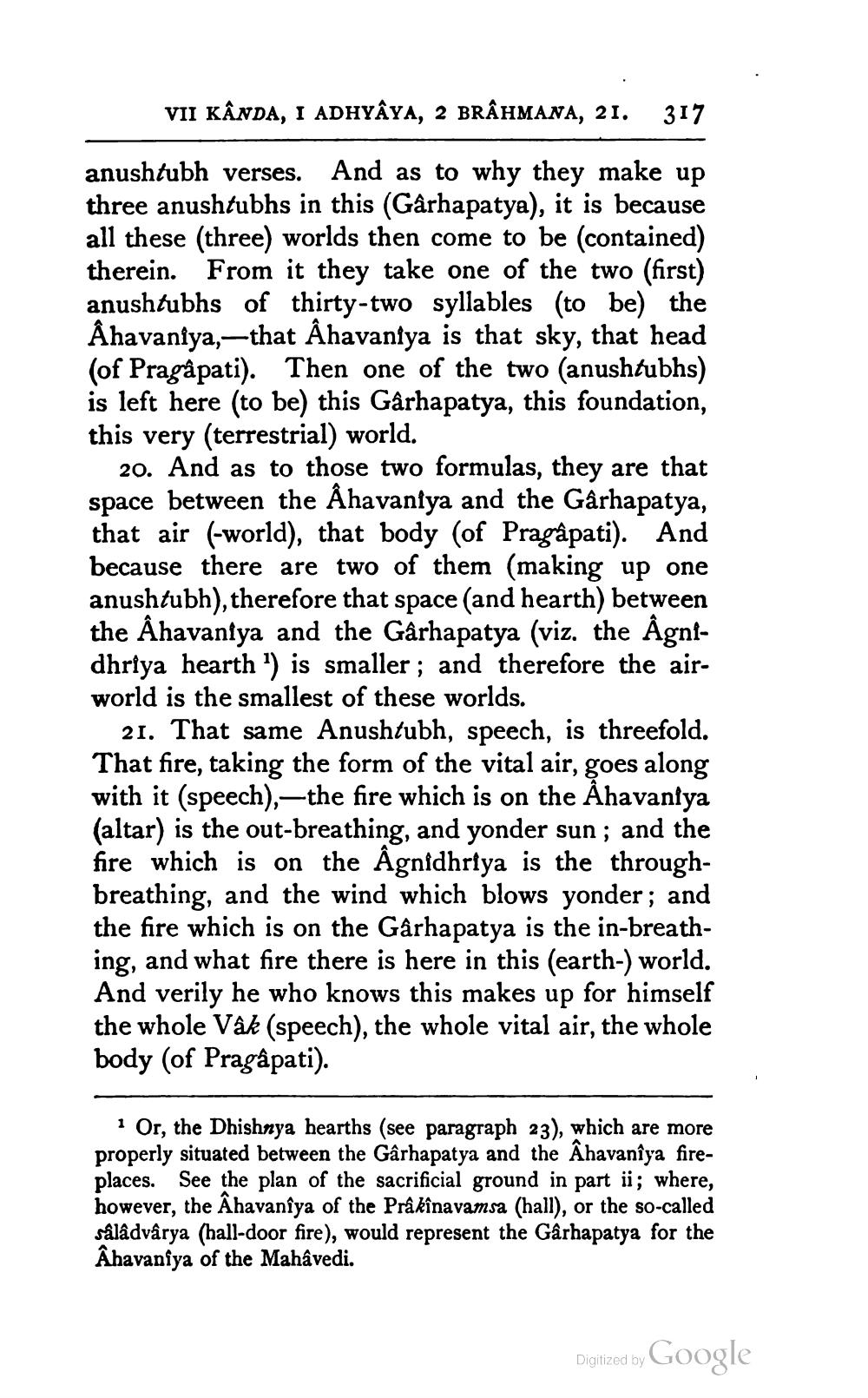________________
VII KÂNDA, I ADHYÂYA, 2 BRAHMANA, 21. 317
anushubh verses. And as to why they make up three anush/ubhs in this (Gârhapatya), it is because all these (three) worlds then come to be (contained) therein. From it they take one of the two (first) anushtubhs of thirty-two syllables (to be) the Âhavaniya,—that Âhavantya is that sky, that head (of Pragâpati). Then one of the two (anushtubhs) is left here (to be) this Gârhapatya, this foundation, this very (terrestrial) world.
20. And as to those two formulas, they are that space between the Âhavaniya and the Gârhapatya, that air (-world), that body (of Pragâpati). And because there are two of them (making up one anush/ubh), therefore that space (and hearth) between the Åhavaniya and the Gârhapatya (viz. the Agntdhriya hearth1) is smaller; and therefore the airworld is the smallest of these worlds.
21. That same Anushtubh, speech, is threefold. That fire, taking the form of the vital air, goes along with it (speech),-the fire which is on the Ahavaniya (altar) is the out-breathing, and yonder sun; and the fire which is on the Agnidhriya is the throughbreathing, and the wind which blows yonder; and the fire which is on the Gârhapatya is the in-breathing, and what fire there is here in this (earth-) world. And verily he who knows this makes up for himself the whole Vâk (speech), the whole vital air, the whole body (of Pragâpati).
1 Or, the Dhishnya hearths (see paragraph 23), which are more properly situated between the Gârhapatya and the Ahavanîya fireplaces. See the plan of the sacrificial ground in part ii; where, however, the Âhavanîya of the Prâkînavamsa (hall), or the so-called sâlâdvârya (hall-door fire), would represent the Gârhapatya for the Ahavaniya of the Mahâvedi.
Digitized by
Google




